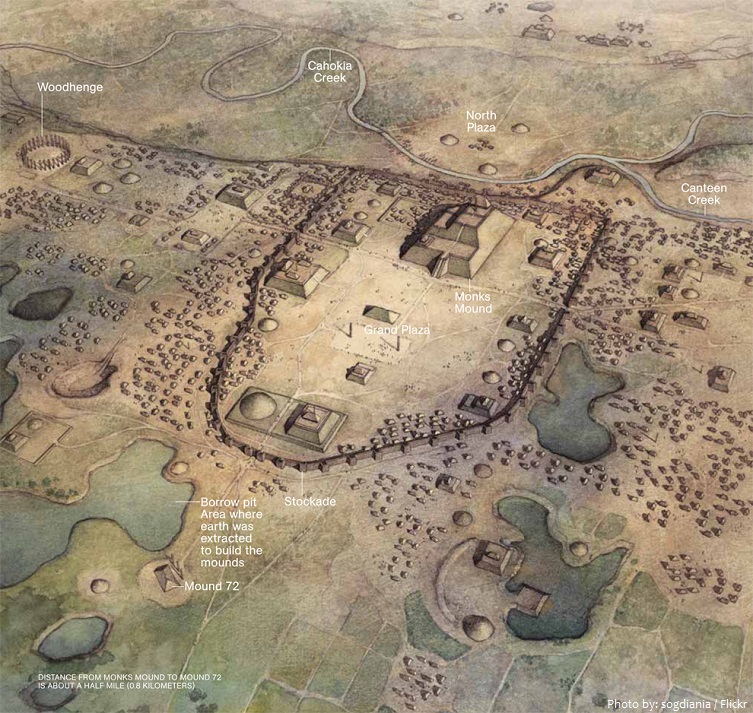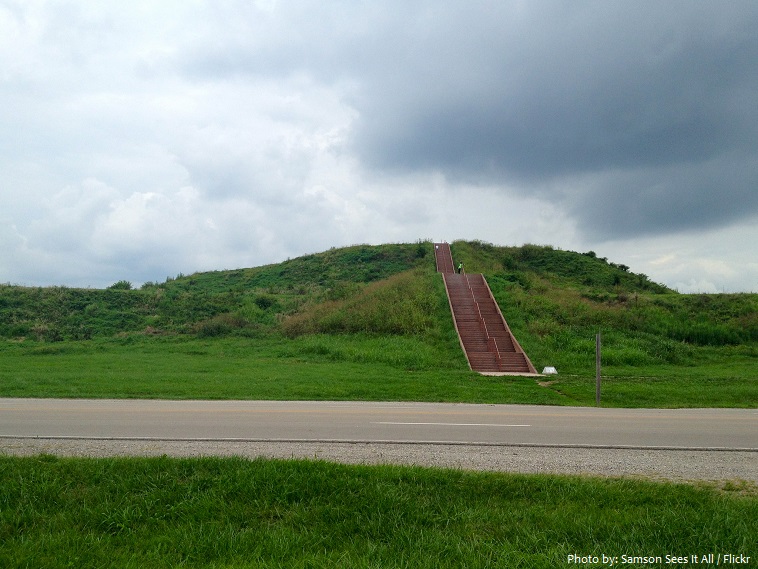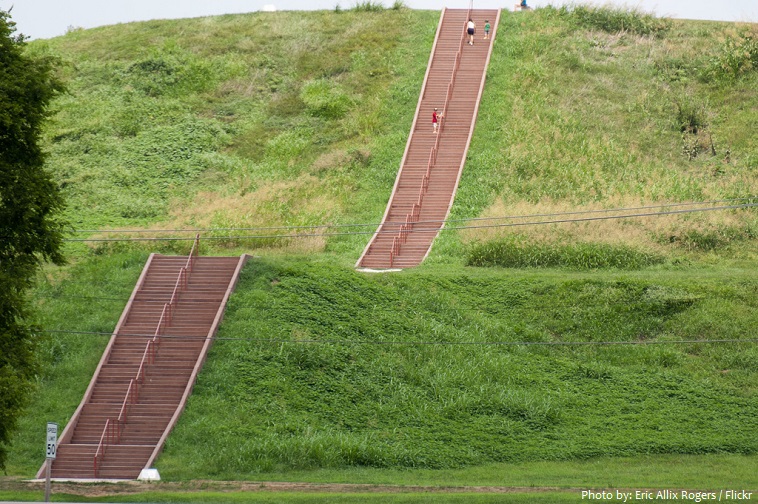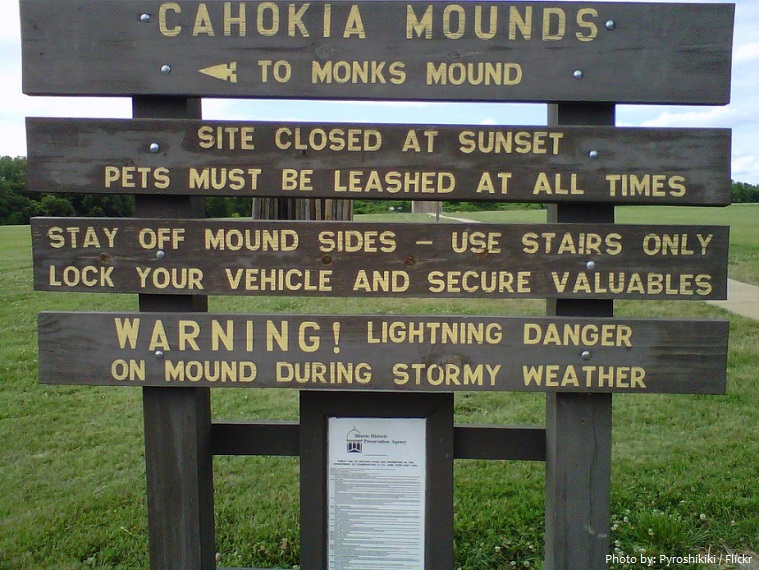The Cahokia Mounds State Historic Site is an archaeological site directly across the Mississippi River from modern St. Louis, Missouri.
It is the largest pre-Columbian settlement north of Mexico.
The site covers 890 hectares (2,200 acres), or about 9 square kilometers (3.5 square miles), and contains about 80 mounds, but the ancient city was much larger.
It was occupied primarily during the Mississippian period (700–1400), when it covered nearly 1,600 hectares (3950 acre) and included some 120 mounds.
It is a striking example of a complex chiefdom society, with many satellite mound centers and numerous outlying hamlets and villages.
This agricultural society may have had a population of 10–20,000 at its peak between 1050 and 1150.
The mounds were named after the Cahokia tribe, a historic Illiniwek people living in the area when the first French explorers arrived in the 17th century.
Established in 1979 the Cahokia Mounds State Historic Site is a National Historic Landmark and a designated site for state protection.
Cahokia Mounds was first protected by the state of Illinois in 1923 when its legislature authorized purchase of a state park.
The Cahokia Mounds State Historic Site was designated a UNESCO World Heritage site in 1982.
The site is open to the public and administered by the Illinois Historic Preservation Division and supported by the Cahokia Mounds Museum Society.
Monks Mound is the largest structure and central focus of the city: a massive platform mound with four terraces, 10 stories tall, it is the largest man-made earthen mound north of Mexico. Facing south, it is 30 m (100 ft) high, 290 m (951 ft) long, and 255 m (836 ft) wide.
The Cahokia Woodhenge was a series of large timber circles located roughly 850 m (2,790 ft) to the west of Monks Mound.
Excavations near Mound 34 from 2002 to 2010 revealed a copper workshop. This unique find was originally discovered in the 1950s by archaeologist Gregory Perino, but its exact location was lost for 60 years. It is the only known copper workshop to be found at a Mississippian culture site.
The Illinois Historic Preservation Division that oversees the Cahokia site hosts public sunrise observations at the vernal and autumnal equinoxes and the winter and summer solstices. Out of respect for Native American beliefs, these events do not feature ceremonies or rituals of any kind.
The fate of the Cahokian people and their once-impressive city is mysterious. The decline of this great civilization is believed to have been gradual. Most historians agree that the Cahokians began abandoning the city around the 1200s, and by 1400 CE the civilization was completely deserted. It is unknown why these people left or where they went. However, this site is significant to Chickasaw history because it is likely the place where many of the Chickasaw Nation’s ancestors originated.
The Cahokia Mounds State Historic Site includes 51 platform, ridgetop, and conical mounds; residential, public, and specialized activity areas; and a section of reconstructed palisade, all of which together defined the limits and internal symmetry of the settlement.




